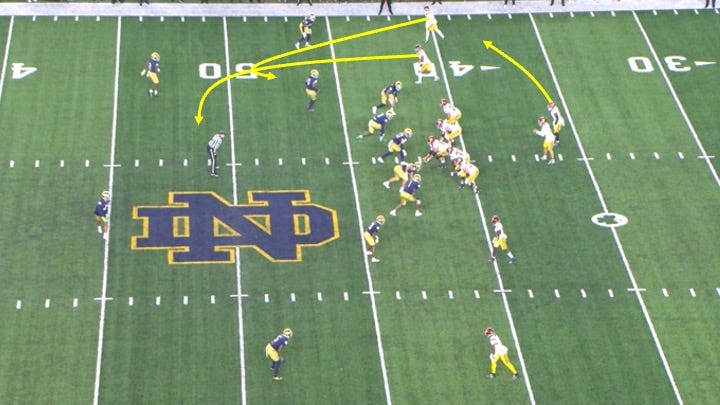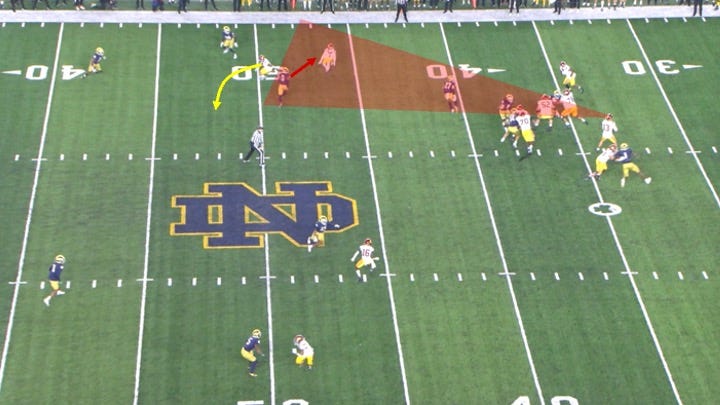As I wrote in part 1 of this breakdown, Caleb Williams has high-level traits that offer a lot for any team to work with. That doesn’t mean he’s without flaws, however.
No quarterback is perfect, and very often their strengths come with trade-offs. Sometimes, those strengths stem from the need to compensate for a lack of ability in a certain area. Other times, a strength is so good that it leaves the player without a need to develop or refine other necessary traits.
This is one of the many challenges in trying to project any quarterback from college to the NFL. Are his weaknesses due to a lack of inherent ability? Or are they just something he hasn’t refined yet but can at the next level?
Either way, there are some issues that have to be considered in the decision to draft Williams.
Timing and Anticipation
My biggest concern with Williams’ game is that I didn’t see a ton of anticipation throws in college. There wasn’t always urgency in his desire and ability to get rid of the ball quickly. I wanted to see more plays where he planted his foot in the ground at the top of his drop and got the ball out in rhythm.
Was this tendency the result of Williams not forcing the issue unless a receiver was wide open since he knows he has a tremendous ability to make plays late in the down?
Or was it an inability to process and make decisions quickly?
Whatever the answer is, he won’t get away with the same style of play quite as often against NFL defenses.
Take a play like this for example. To the right, USC had a curl-dig-flat combination called:
Williams looked at the curl first but didn’t like it because the underneath defender jumped it. That left the dig wide open:
Williams should have been ready to throw the dig right off of his receiver’s break as this was a pretty clean read. But you can see below that Williams still hadn’t started his throwing motion after his receiver was out of his break and already staring back at him:





